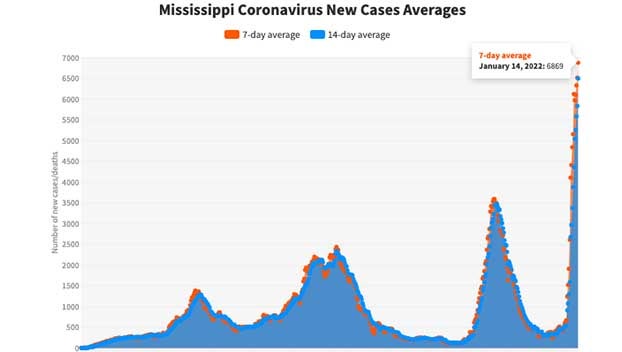Like Idaho, Mississippi has a weak hand. Like Idaho, it must become stronger and more resilient.
Published 11:14 am Tuesday, January 9, 2018
Editor’s Note: This column originally appeared as an editorial board from the Greenwood Commonwealth staff.
By The Greenwood Commonwealth Editorial Board
A recent editorial, noting that the population in Mississippi has declined for three straight years, offered suggestions on how to reverse that.
An analysis of the U.S. Census Bureau’s population report shows how great a challenge this will be for Mississippi — but it points to a small state that’s doing it.
The Wonkblog column on The Washington Post website included a fine piece that explored why Idaho — of all places — had the largest percentage increase in population this past year, while Wyoming, which shares a border with Idaho, had the largest decrease.
Wyoming’s loss of 5,600 people last year, or 1 percent of its population, is easy to explain: the crash of the coal mining industry.
The Post said less expensive natural gas has reduced utilities’ reliance on coal, and so coal’s price and production have declined. Wyoming produced 25 percent less coal in 2016 than it did in 2014, which explains why the state went from high population growth in 2012 to the lowest rank this year.
Wyoming’s population struggle sounds a lot like Mississippi’s. The Sun Belt is adding plenty of residents — except for Mississippi and Louisiana. It’s the same story out west, where virtually every state in the Mountain West and Pacific Northwest is growing at a healthy clip — except Wyoming.
The problems in Mississippi run deeper. In the past, coal spurred population growth in Wyoming. Mississippi has had no such luck.
The Post analysis included a color-coded chart that ranked each state’s population growth per decade going back to 1900. Wyoming at least has had a few decent decades. The last time Mississippi’s population grew at a rate in the top half of the list was the 1940s.
Idaho, however, is the most fascinating part of the story. It’s a low-population state — at 1.7 million it has a little more than half the residents of Mississippi. So why are people moving there?
The Post suggests it’s because Idaho had to move on from the natural resources in its economy a century ago. It had to diversify, while Wyoming stayed with coal mining. This put Wyoming “at the mercy of the boom-and-bust cycles that characterize the global commodity market and sapped incentive to build up a more robust local economy.”
Idaho, meanwhile, replaced mining with agriculture and forestry, and more recently with manufacturing, technology and services. Something’s working: In 1890, Idaho had 30 percent more people than Wyoming. This year, it has 200 percent more.
Anecdotes say people from more expensive Western states, especially California, are moving to Boise, the largest city in Idaho. Newcomers apparently are drawn to the city because of its size and low cost of living.
So how does all this relate to Mississippi? First, we’re not overly dependent on natural resources such as Wyoming and West Virginia are. And if Idaho used agriculture and forestry to develop, at least Mississippi does a good job with both of those, too.
Cost of living? Idaho is fourth-cheapest in the country, according to a 2017 economic research index. Can you guess one of the three states that beats Idaho? Mississippi is among them.
Here’s how the Post describes the difference between Idaho and Wyoming: “One began with natural gifts and found little incentive to grow beyond them, and another was forced to play a weaker hand but became stronger and more resilient in the process.”
Mississippi has a weak hand but must become stronger and more resilient. Step One would be to send an economic development team out to Idaho for a good look around to see what works. Surely we can learn something.
–Greenwood Commonwealth





